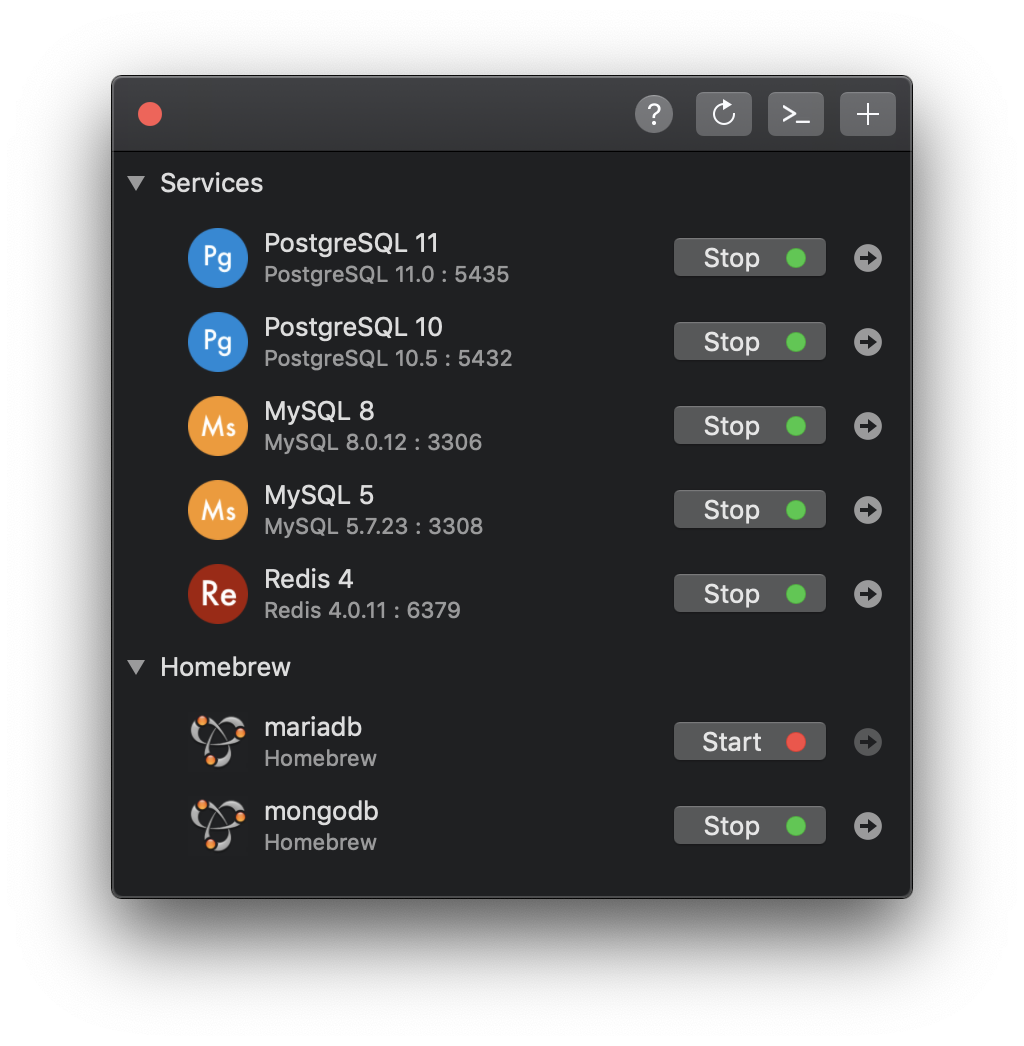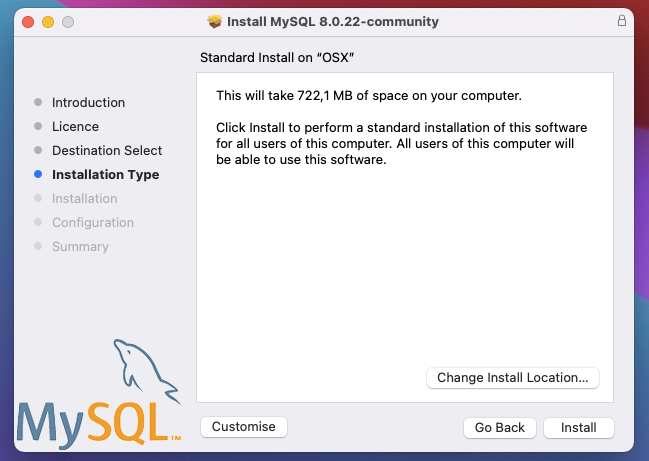

- WHERE DID I INSTALL MYSQL ON MAC HOW TO
- WHERE DID I INSTALL MYSQL ON MAC MAC OS X
- WHERE DID I INSTALL MYSQL ON MAC PASSWORD
- WHERE DID I INSTALL MYSQL ON MAC DOWNLOAD
There may be security implications to this. T21:57:11.6NZ mysqld_safe mysqld from pid file /var/run/mysqld/mysqld.pid endedįinally got the service to start by creating a folder for the PID, and setting the permission on the folder to global read/write/x. T21:57:10.986146Z 0 Can't start server: can't check PID filepath: No such file or directory Here is the log output tail /usr/local/var/mysql/ Tried Greggle's link to fully remove a previous install of MySQL 8, but after a restart the problem persists # brew services start Successfully started (label: launchctl list | grep services is reporting the service started, but Launchctl is not showing a PID. Still seeing the "Can't connect to local MySQL server." To manage your databases, I recommend using Sequel Pro, a MySQL management tool designed for macOS.Ĭurrent version available: 1.1.2 Commentsġ The brew services start - instruction is equal to : $ ln -sfv /usr/local/opt/mysql/*.plist ~/Library/LaunchAgents
WHERE DID I INSTALL MYSQL ON MAC PASSWORD
Important : Use the single ‘quotes’ to surround the password and make sure to select a strong password! Database Management Mysqladmin -u root password 'yourpassword' Open Terminal and execute the following command to set the root password: Verify the installed MySQL instance : $ mysql -V.Įxpected output : Ver 14.14 Distrib 5.7.22, for osx10.13 (x86_64) Load and start the MySQL service : $ brew services start output : Successfully started mysql (label: )Ĭheck of the MySQL service has been loaded : $ brew services list 1įorce link 5.7 version - $ brew link -force Install brew services first : $ brew tap homebrew/services

To install MySQL enter : $ brew install Additional configuration Homebrew
WHERE DID I INSTALL MYSQL ON MAC DOWNLOAD
Note: Homebrew will download and install Command Line Tools for Xcode 8.0 as part of the installation process.Īt this time of writing, Homebrew has MySQL version 8 as default, but as we're aiming to get 5.7, we'll need to append to the default package key:.Installing Homebrew is effortless, open Terminal and enter :.
WHERE DID I INSTALL MYSQL ON MAC HOW TO
This procedure explains how to install MySQL using Homebrew on macOS (Sierra 10.12 and up) Install Homebrew See Section 2.7, “Installation Layouts”.This is a fork of original gist, with slight changes on pointing to 5.7 version branch, instead of 8 (latest default of MySQL in Hombrew). The MySQL socket file is created as /tmp/ mysql. The installation layout is similar to that of a tar file binary distribution all MySQL binaries are located in the directory /usr/local/ mysql/bin. I installed earlier today '5.5.9-log MySQL Community Server (GPL)' and it is working fine.
WHERE DID I INSTALL MYSQL ON MAC MAC OS X
First of all I am running Mac OS X 10.6.6 with the latest version of the developer tools installed. Note: you will be asked for the Administrator password. did not work at all, so I am trying from scratch.

If you've installed with the dmg, you can also go to the Mac "System Preferences" menu, click on " MySql" and then on the configuration tab to see the location of all MySql directories. You will also see mysql which is the installation directory. sock by default.See Section 2.7, Installation Layouts. How do I know if MySQL is running on my Mac? When you type ls you should see mysql-YOUR-VERSION. how do I enable accessibility on my Mac Perform the steps below to enable Accessibility in OS X 10.7: Where is MySQL installed on Mac The installation layout is similar to that of a tar file binary distribution all MySQL binaries are located in the directory /usr/local/mysql/bin.The MySQL socket file is created as /tmp/mysql. You can configure MySQL to automatically start when you turn on your computer using the MySQL Preference Pane. Start MySQL by clicking Start using the MySQL Preference Pane, which was installed during the default installation. The MySQL server is installed on the Mac, but it does not load by default. Similarly, you may ask, can you install MySQL on Mac? If the server is already started, the button will change to “Stop MySQL Server”. Choose the “ MySQL” preference panel, then click on the “ Start MySQL Server” button to start MySQL Server on Mac. To do that, simply go to the ? Apple menu and open System Preferences.


 0 kommentar(er)
0 kommentar(er)
